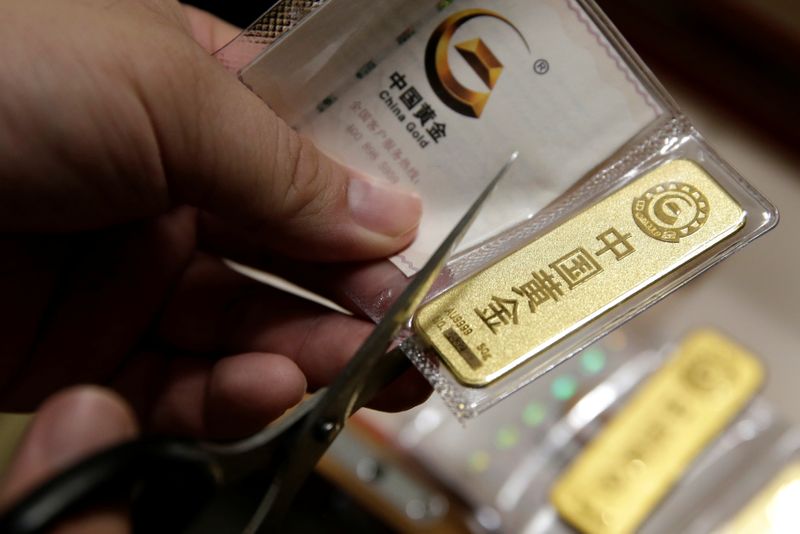XAU/USD forecast 2024: Analysts bullish on gold prices amid global uncertainties
As we step into the second half of 2024, analysts’ forecast for XAU/USD has remained increasingly optimistic, with many predicting that gold prices could reach new record-highs by mid-2025, driven by a confluence of factors including central bank purchases, investor demand, and macroeconomic conditions.
Insights from Citi, TD Securities, and Bank of America show that key drivers behind the bullish outlook for gold prices continue to be strong physical demand, central bank activities and recent investment trends. Strong physical demand
Citi analysts recently noted a slight softening in physical gold demand in the second quarter of 2024 compared to the first quarter. The investment bank and financial services company, however, pointed out that the softening comes from a very strong base.
It also emphasized that underlying gold consumption growth remains strong, which could push spot prices towards a record average range of $2,400-$2,600 per ounce in the latter half of the year, as financial investors play catch-up with the physical market.
Another significant trend that will impact XAU/USD is the decrease in non-monetary gold imports into China, which fell to 137 tons per month in the second quarter from 189 tons per month in the first quarter.
Despite this decrease, Citi projected a record 1,750 tons of onshore bullion imports for 2024, an 18% year-on-year increase and an eightfold rise from 2020 levels. If accurate, this would mean Chinese retail gold imports would represent 47% of global gold mine output in 2024, up from an average of 34% in 2021-2023 and 36% in 2017-2019.
Moreover, official sector demand remains strong. Central bank gold purchases have stabilized at a record 28-30% of gold mine production since 2022, with the potential to rise to 35% in a bullish scenario.
Citi forecasted a record 1,100 tons of central bank gold buying in 2024, with the possibility of exceeding 1,250 tons if bullish conditions prevail. Inflows into gold ETFs are also expected to improve as the Federal Reserve begins its rate-cutting cycle. Central bank activities
The People's Bank of China (PBoC) did not purchase gold for a second consecutive month in June 2024, leading to a brief decline in gold prices. However, the Reserve Bank of India, the National Bank of Poland, and the Czech National Bank continued their gold purchases. The buying coming from the central banks of the latter nations helped in stabilizing the market.
The pause in China's central bank purchases followed a record high in spot gold prices in May, driven by 18 months of consistent buying from the PBoC and other central banks.
China held 72.80 million troy ounces of gold at the end of June 2024, unchanged from May, while the value of its gold reserves slightly decreased. TD Securities suggested that while the PBoC may be waiting for a price pullback before resuming purchases, other central banks are likely to continue buying, maintaining the overall bullish sentiment in the market.
The World Gold Council's survey supported this view, indicating that 29% of central banks intend to increase their gold reserves in the next 12 months, the highest level since the survey began in 2018. Gold prices: Future projections and outlook
Bank of America (BofA) analysts predicted that gold prices could surge to $3,000 per ounce within the next 12-18 months. However, they noted that current market flows do not yet support this price point.
The analysts stressed the need for increased non-commercial demand as they believe a Federal Reserve rate cut could trigger significant inflows into physically backed gold ETFs and higher trading volumes.
Central bank purchases also play a crucial role in BofA's bullish outlook. The analysts argued that ongoing central bank buying, driven by efforts to reduce the share of USD in foreign exchange portfolios, will support gold prices. Gold's status as a long-term value store, hedge against inflation, and portfolio diversifier underpin this trend.
BofA's model considered various factors, including mine output, recycled gold, and jewelry demand. Analysts estimated that non-commercial purchases have supported an average price of $2,200 per ounce year-to-date.
A substantial increase in investment demand could push prices towards the $3,000 mark. The World Gold Council's survey aligned with this view, which is also in line with central banks' intentions to increase their gold reserves which could further drive up prices. A bullish year ahead for gold
The 2024 outlook for XAU/USD is apparently bullish at the moment, supported by strong physical demand, strong central bank purchases, and potential shifts in monetary policy.
While short-term fluctuations are inevitable, the long-term trend points towards higher gold prices. Analysts from several banking firms note that the critical factors that could drive gold prices to new heights include sustained central bank buying, increased investment demand, and macroeconomic uncertainties.
The interplay between monetary policy, inflation expectations, and geopolitical risks will continue to shape the gold market's trajectory. For now, the consensus appears to be pretty much clear: gold remains a valuable asset in an uncertain world, with the potential for significant gains in the coming months and years.
Source: Investing.com
